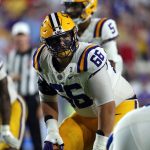When the White Sox signed Luis Robert in the summer of 2017 we knew he was a special player, but just how special is becoming evident. In an article from MiLB.com’s Sam Dykstra, Robert’s speed comes into focus as Dykstra breaks down how Robert compares to other speedy players.
Raw Speed vs. Applicable Speed
Seems like a silly distinction, but as you can imagine, directional speed is just as important as acceleration and the same goes for top speed. So, not all speed is created equal, and in the age of data analytics in sports Dykstra and MiLB.com have a fun too, to measure these kinds of idiosyncrasies.
These are the questions Dykstra started out with:
“In baseball, a few questions arise when it comes to utilizing speed: How often does a player try to steal a base? How effective is he at doing so? How often does he stretch a double into a triple? How often does he come around to score instead of being stranded on base? Instead of just using a stopwatch to measure home-to-first times, there are other ways to think about speed and how it affects play on the diamond.”
And this is how speed score was created. Dykstra explains that there have been a few iterations of the stat since it was created in the ’80s and to make the case for Robert he used the four-component model.
—Stolen-base percentage: How good is a player at stealing a base once he decides to go?
—Frequency of attempts: It’s one thing to be perfect in stolen bases, but if perfect means 1-for-1, that doesn’t tell us much. Speedy players are more likely to attempt to steal more often.
—Percentage of triples: Players with speed can turn singles into doubles, doubles into triples, triples into inside-the-park homers. Triples are most closely associated with speed and more frequent than inside-the-parkers, so this measures how often a player turns balls in play into triples. (This component typically results in a number between 0 and .03, but is put on a 0-10 scale.)
—Runs-scored percentage: By the same token, speedy players are more likely to wheel around the bases and score than slower runners, who could be thrown out or stopped prematurely and stranded at third.
The average of these four calculations provides the speed score. It’s important to keep in mind that Robert only played 50 official games this season after dealing with thumb sprains twice this season. It’s fair to say that some of Dykstra’s results could be skewed in either direction.
Using this calculation Robert ranked first among MiLB’s top-100 prospects for speed score, better than Fernando Tatis Jr. and Jarred Kelenic. In Dykstra’s own words:
“To put Robert’s 8.7 Speed Score into context, the average Speed Score among top-100 prospects was 5.3, so he’s well above that mark. Going even deeper, Victor Robles, whose 75-grade run tool is tops among this elite group, was 15th at 6.4. Myles Straw led the Minors with 70 stolen bases, has an 70-grade run tool and still fell short of Robert with an 8.3 Spd.”
Dykstra also adds that Robert’s 65-grade speed on the 20-80 scale plays even better during in-game scenarios, rating closer to 75 when on the basepaths. And keep in mind that his 65 speed-rating would beat Robles and Straw in a straight 40-yard dash.
Those Who Overperformed
Dykstra goes into more detail about how impressive Robert was in his piece, but he also scrutinizes the possibility of Robert overperforming while others underperformed. His conclusion was that while Robert posted clusters of impressive figures he still underachieved compared to other players. Tatis Jr. was one notable player that has consistently elevated his run-game the past two seasons. Others players included Kelenic and Bo Bichette.
Luis Robert follows up the double with a steal of third, scoring on an error on the throw. Dash up 4-0 pic.twitter.com/JlxwcY1uPK
— Julie Brady (@DestroyBaseball) August 30, 2018
There’s a lot to be said for emphasizing tools. This is why some players may not rank as “fast” but still log statistics that place them among burners like Billy Hamilton. This is a very important reality in the majors.
Players with the ability to find an edge and elevate their skills through observation and application will always fair better. This is how players extend their careers and also how they separate themselves from the pack of average big-leaguers.
The Good News For The White Sox
The White Sox are built for speed. Tim Anderson and Yoan Moncada have outstanding run-tools while Adam Engel (if he plays himself into the prolonged conversation for a roster spot) factors into that mix.
Robert will certainly add to this contingent and a slew of other prospects bring this skill to the table. Blake Rutherford, Luis Alexander Basabe and Micker Adolfo come to mind. Nick Madrigal is another speedy players, although not to the level these others are ranked.
Moreover, the White Sox appear to be ahead of the curve in emphasizing speed. While the rest of the league pads their rosters with thumping power hitters the White Sox seem to be creating a speed game. In fact, as pitchers continue elevating the zone and hitters adjust by making more contact, speed will become a major point of emphasis.
This is nothing new. You don’t need a special metric to tell you that speed kills. Guys that can run shrink the field defensively and speed the game up offensively. This fundamental knowledge will serve the White Sox well as they continue rebuilding.












